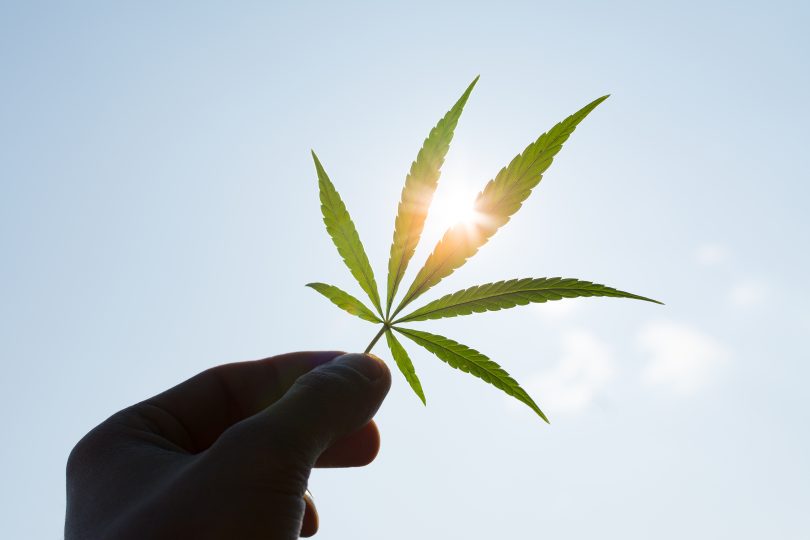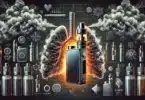Cannabinoids are naturally-occurring chemical structures that exist in cannabis and hemp, as well as in other plants. These cannabinoids interact uniquely with receptors throughout the body in interesting ways.
Even though the cannabis plant has been under strong prohibition for decades, some research on it has been carried out over the years. Back in the 1960s, scientists in Israel led by Raphael Mechoulam identified chemical compounds in cannabis and hemp which they named “cannabinoids.”
These compounds react in a variety of ways with the endocannabinoid system present in all humans and other mammals, via CB1 and CB2 receptors in the body. The cannabinoids work in synergy with other compounds, terpenes, and flavanoids in the plants and have a unique effect on humans.
We know of more than 100 cannabinoids in cannabis, with the primary one being tetrahydrocannabinol (THC). THC is psychoactive but also has medicinal and therapeutic effects. The second most-studied cannabinoid is cannabidiol (CBD).
CBD has no psychoactive properties but does work as an anti-inflammatory, stress-reducer and as a sleep aid. There are also synthetic cannabinoids such as aminoalkylindoles, 1,5-diarylpyrazoles, and quinolines. These are made in a lab by replicating the chemical structure of naturally-occuring cannabinoids.
There are three distinct categories of cannabinoids, which we will discuss in detail today.
Use the sign up form to subscribe to the
CBD Flowers Weekly Newsletter
Endocannabinoids
Endocannabinoids are the cannabinoids that we (and all other mammals) create within our bodies. Technically speaking, endocannabinoids are natural endogenous ligands produced by people and animals, connecting the cannabis receptors.
These endocannabinoids and cannabinoid receptors make up the endocannabinoid system (ECS) in all humans. This system regulates things like sleep, mood, and appetite, as well as other vital physiological functions. Two of the primary endocannabinoids are anandamide and 2-arachidonoylglycerol, and there are others.
Endocannabinoids act as a sort of access point for the main cannabinoid receptors, CB1 and CB2, as already discussed. CB1s are located in the central nervous system, while CB2s are situated in the immune system.
Endocannabinoids create balance – or homeostasis – within the body. A lack of endocannabinoids stemming from the inability to produce them, is linked to a slew of different health conditions including everything from migraines, to mental health disorders, to irritable bowel syndrome.
Phytocannabinoids
Phytocannabinoids are characterized by specific carbon atoms which only occur in cannabis. These phytocannabinoids exist inside the plant in both their acidic and neutral forms, although they degrade due to oxidization from exposure to light and air.
Are You Suffering From Clinical Endocannabinoid Deficiency?
Most people refer to phytocannabinoids simply as cannabinoids as the prefix, “phyto” just means “pertaining to derived from plants.” These compounds aren’t limited only to cannabis and are also found in the Echinacea purpurea plant and others.
Cannabinoids form primarily in the plant’s resin and within the trichome glands. These are located in the densest concentrations in the buds of the plant. Phytocannabinoids are also insoluable in water but soluable in alcohol and fats.
As mentioned above, when we don’t produce enough endocannabinoids, we are ‘cannabinoid deficient’, so bodies become destabilized and no longer function optimally. This is where supplementing with plant-based cannabinoids (phytocannabinoids) comes into play.
Synthetic Cannabinoids
Synthetic cannabinoids are a relatively new human invention and are mimicked natural compounds made under laboratory conditions. There are a few synthetic cannabis products on the market, including dronabinol, a THC-synthetic, and Marinol, which comes in capsule form and is used to treat symptoms of nausea, loss of appetite and weight loss.
Some of these products are approved for medicinal use in the US, UK, Switzerland, and Canada, among other countries. However, while synthetic cannabinoids were initially invented for study purposes, they haven’t proved themselves in their current form to be reliable and safe for humans, at least in clinical tests. More research into synthetic cannabinoids is needed so that more can be understood about the use of them for treating medical conditions in humans.
Real Cannabis vs Synthetic Marinol – Which One is Better?
Synthetic cannabinoids are also used in the recreational realm. It’s known by names like K2, spice, and nitro, and it’s readily available for kids to purchase from a variety of stores. Some of these synthetic cannabinoids are classified the same as heroin and crack cocaine, whereas others are legally sold as “herbal incense” or “potpourri”.
Often times, teens who don’t have access to real cannabis or people who know they will be drug tested, use these fake herbs to get high, although the effects are not even close to what you would feel from smoking real cannabis. There are numerous acute and long-term health risks associated with the use of synthetic cannabinoids.
Final Thoughts
Of all the known compounds and chemicals inside cannabis, CBD is the most interesting for many people. CBD has been proven time and time again to treat anxiety, movement disorders, and pain, as well as a myriad of other conditions.
CBD is interesting as it doesn’t bind to CB1 and CB2 receptors in humans, instead just encouraging them externally to ensure the body and mind are working in tandem. As more research is carried out on CBD, it’s proving to be a miraculous little compound which has some significant effects on human health. Understanding how to use CBD correctly is also vital for anyone wanting to medicate with a natural alternative instead of pharmaceutical drugs.
In the coming years, there’s little doubt that more robust research will be carried out on the various cannabinoids in cannabis and hemp to understand how they can benefit people even more.
For more articles like this one and stay in-the-loop on all things cannabis related, make sure to subscribe to the Medical Cannabis Weekly Newsletter.








Real cannabis is always best. Why let the medical companies make even more money on something that should be free?
In Sweden where I live the state have forbidden the citizen to use hemp oil, why? Because they think it’s a drug because of the THC (less than 0,2% in almost all hemp oil…).
I have friends that have tried Marinol and Sativex and the effect is not as good as the plant.